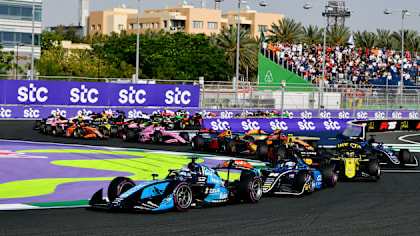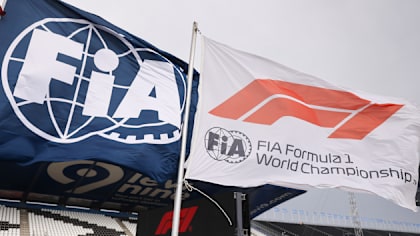
News
New F1 helmet safety standard to be introduced for 2019
Share

Formula 1 safety is set to take another leap forwards next season after the FIA revealed a new helmet standard that will be mandatory from 2019.
Formula 1's governing body has announced the innovative new design after over a decade of research, with the ultra-protective helmet offering a number of vital safety benefits, including advanced ballistic protection and increased energy absorption.
Notably the front of the visor has been lowered by 10mm, which has been implemented to increase safety during impact from debris, while the shell itself uses advanced composite materials to ensure resistance to crushing and penetration.
This new standard, called FIA 8860-2018, will first be used in F1 and comes after the Halo cockpit protection system, designed to reduce the risk of injury from debris or other objects striking a driver’s head, was made mandatory this season.
“The current top-end helmets are already the safest in the world but the new standard will take them to the next level,” said FIA Safety Director Laurent Mekies.
“It is important for all of our safety research that we continually strive to improve and this is why we are requiring all manufacturers to meet this tougher standard for our championships.”
F1 helmet manufacturers Stilo, Bell Racing, Schuberth and Arai worked closely with the FIA throughout the extensive research process and will now begin work on their new designs ahead of next season.
1 / 4
Under the new FIA 8860-2018 standard all helmets must withstand the following tests:
-
Standard impact: Helmet impact at 9.5m/s. Peak deceleration on ‘driver’s head’ shall not exceed 275G.
-
Low velocity impact: Helmet impact at 6m/s. Peak deceleration shall not exceed 200G with a maximum average of 180g.
-
Low lateral impact: Helmet impact at 8.5m/s. Peak deceleration shall not exceed 275G.
-
Advanced Ballistic Protection: A 225g metal projectile fired at 250km/h. The peak deceleration shall not exceed 275G.
-
Crush: A 10kg weight falling 5.1 metres onto helmet. Lateral and longitudinal tests. The transmitted force should not exceed 10 kN.
-
Shell penetration: A 4kg impactor dropped onto helmet at 7.7 m/s.
-
Visor penetration: Air rifle fires 1.2g pellet at visor. Pellet must not penetrate the interior of the helmet.
-
Visor coating: Transmitter test to ensure colouration and vision is not significantly changed or distorted.
-
Retention system: Roll-off test and dynamic test to ensure strength of chin strap and its attachments.
-
Chin guard linear impact: Impact test with full headform at 5.5m/s. The peak deceleration shall not exceed 275G.
-
Chin guard crush: Hammer hits chin guard and measures ability to keep impact away from the head.
-
FHR mechanical strength: Test to ensure high strength of attachment points for Frontal Head Restraints.
-
Projection and surface friction: Test to ensure helmet surface uniformity and that friction is minimised. Shell surface also subjected to BARCOL hardness test for resistance to penetration.
-
Flammability: Helmet exposed to 790 C° flame; it must self-extinguish once flame is removed.
YOU MIGHT ALSO LIKE
Feature The ‘important’ lessons F1 is learning from the development of sustainable fuels in F2 and F3 ahead of 2026
News ‘I need to chill out’ – Norris opens up on early-season mindset as he admits to putting ‘too much pressure on myself’
News GM Performance Power Units approved as F1 power unit supplier
News Doohan praises Alpine for removing pressure around his future with the team








